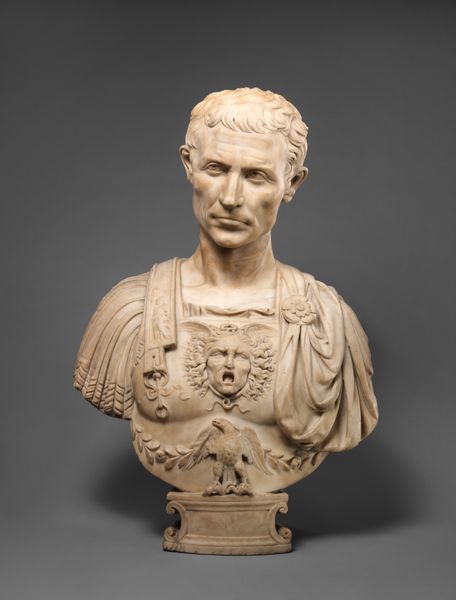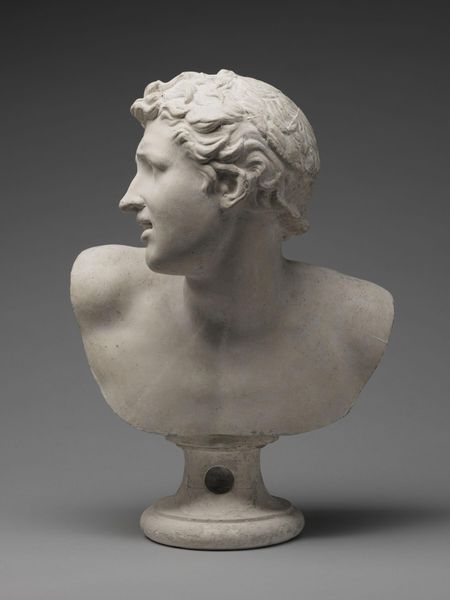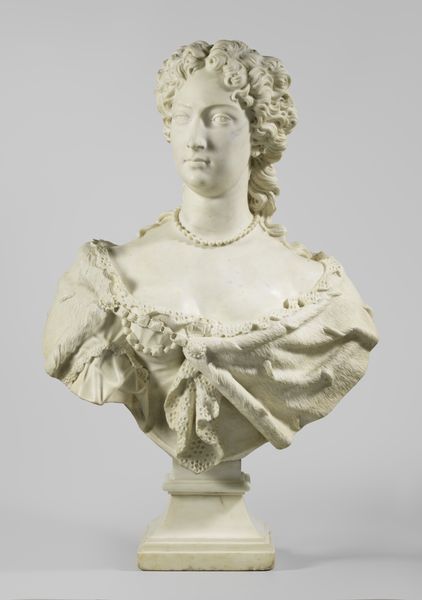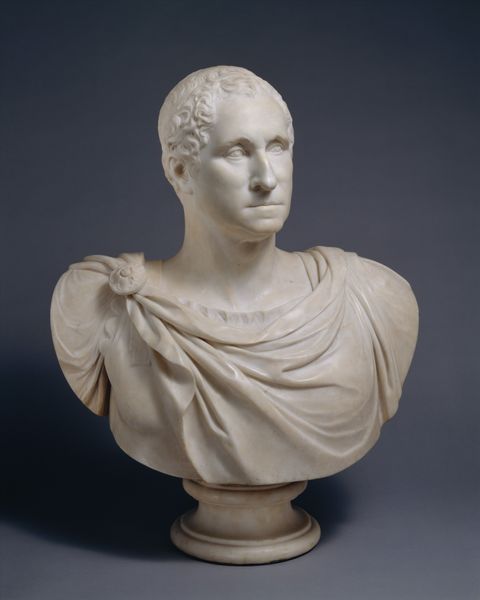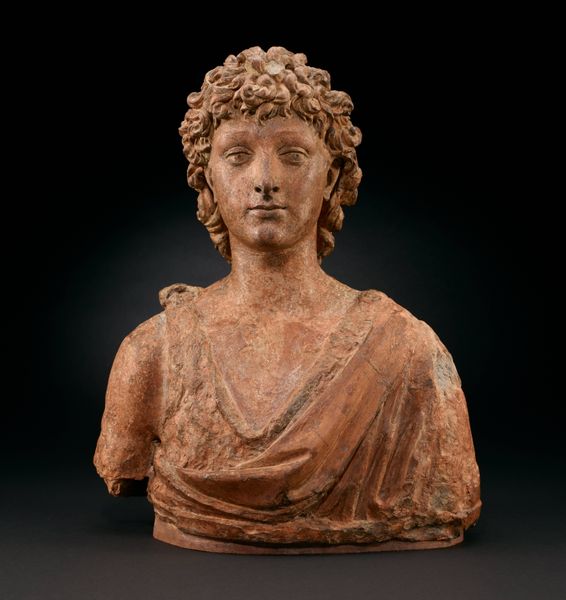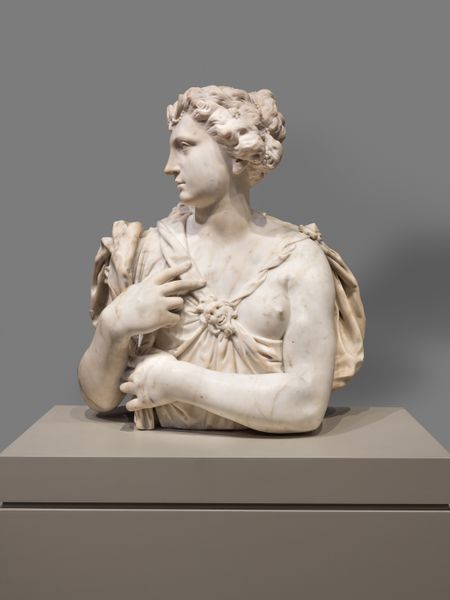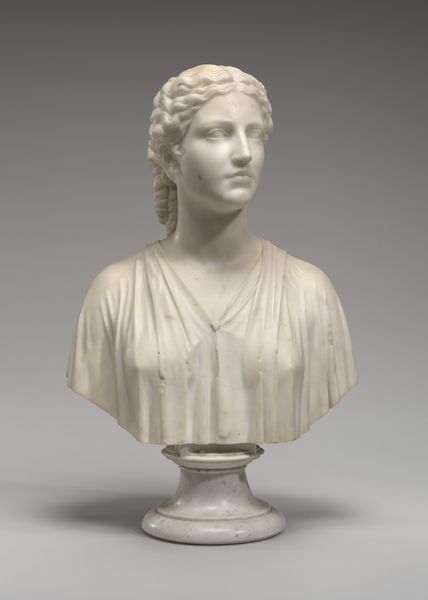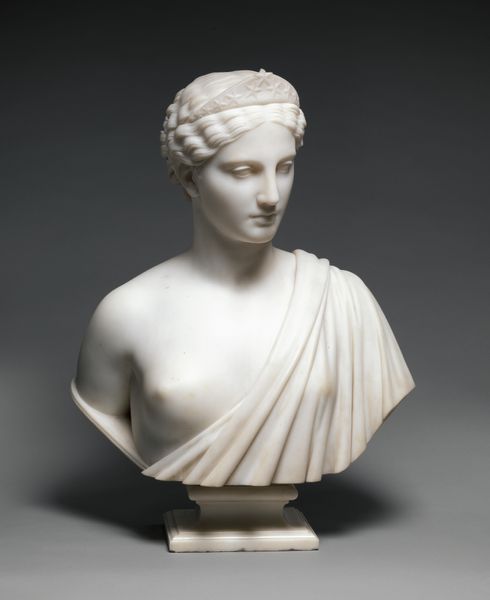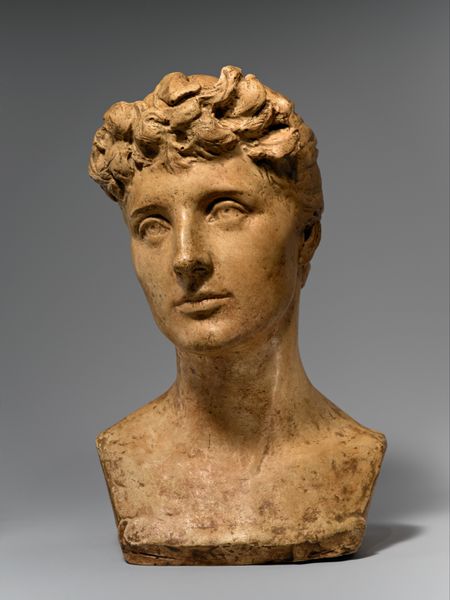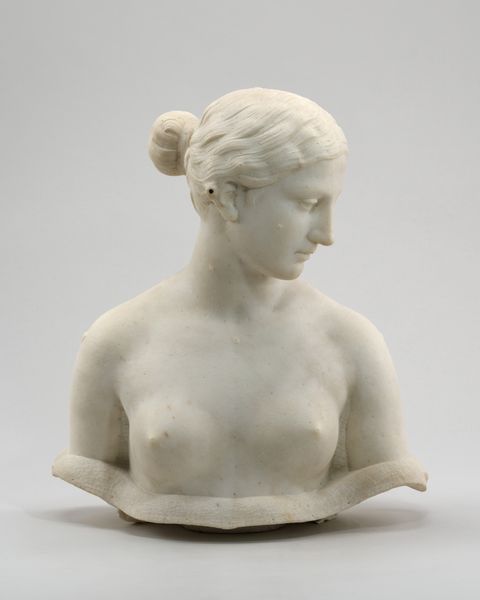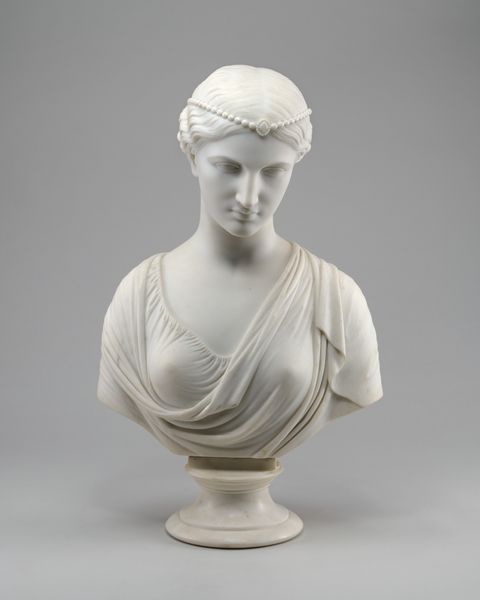
Cosimo I de' Medici (1519–1574), Duke of Florence 1539 - 1540
0:00
0:00
sculpture, marble
#
portrait
#
high-renaissance
#
sculpture
#
history-painting
#
decorative-art
#
marble
#
italian-renaissance
Dimensions: Overall (confirmed): H. 31 1/2 x W. 30 7/8 x D. 12 in. (80 x 78.4 x 30.5 cm); Overall (height with socle): 37 3/4 in. (95.9 cm)
Copyright: Public Domain
Curator: Baccio Bandinelli sculpted this marble bust of Cosimo I de' Medici, Duke of Florence, between 1539 and 1540. It now resides at the Metropolitan Museum of Art. Editor: He looks...stern. Maybe preoccupied? There's a weight to that gaze, like he's considering serious matters of state, or perhaps just calculating the grocery bill for the palace. The folds of the toga are lovely though. Curator: Yes, the marble work conveys not just physical likeness but also power and authority, key for solidifying Medici rule. Consider how marble itself—expensive, laborious to extract and carve—signifies wealth and dominance. Bandinelli wasn’t just portraying Cosimo; he was actively constructing a persona, linking him to classical ideals of leadership and civic virtue. Editor: Definitely a "command presence" vibe, sculpted into the very stone. But, if I may say so, there is something a bit cold and impersonal about it all. Perhaps the artist was too concerned with the Duke's public image than anything else? A man who doesn’t sweat makes a great leader! Curator: That detachment reflects a specific ideological choice, too. Cosimo aimed to modernize Florence, and that included streamlining the production of imagery—from grand portraits like this to festival decorations. We shouldn’t overlook how these visual strategies contribute to political stability, shaping perceptions of power. The very making of this piece must have been quite a spectacle in itself! The stone itself and its handling. Editor: Well said. It almost makes you wonder what Cosimo thought of it? What conversations took place while he sat as a model—or rather, struck a pose—for Bandinelli. Was the weight of all this grandeur ever a burden? I find that in many official portrayals of the time, like here, the essence of the portrayed person almost always seems lost, and buried under a lot of stones! Curator: An interesting point to remember, next time one questions what art has to do with political processes, with manufacturing social belief and legitimizing authority. Editor: Precisely, even with the greatest intentions and skill, maybe absolute power sculpts absolutely boring portraits sometimes? Curator: Hah! True. A valuable note, indeed, to finish on.
Comments
No comments
Be the first to comment and join the conversation on the ultimate creative platform.
